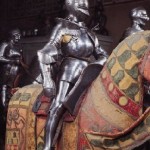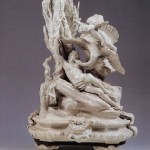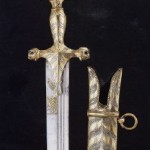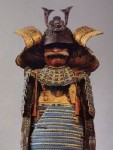The Stibbert Museum is one of the most fascinating and surprising places in Florence. In the museum-house, created by its owner, Frederick Stibbert (1838-1906), are gathered and arranged according to an exciting and rich with drama disposition, its exceptional collections which Stibbert left upon his death to the city: in particular the famous collection of arms, but also objects of art and daily life from the European, Islamic and Far Eastern civilizations, especially the Japanese one.
The museum is testimony to the taste and intelligence of an individual and at the same time it represents the synthesis of the highest cultural values of the 19th century: an interest in the past, a glorification of art and a passion for the exotic. This villa, lying on the slopes of the Florentine hills, was transformed by Stibbert into a neo-Gothic castle, with spacious rooms on the ground floor meant to house the collections in the spectacular style and the sequence conceived by him.
The other part of the building houses the sumptuous private apartments, furnished and decorated according to the nineteenth century standards, which made every room re-evoke a different style: neo-Renaissance for the ballroom, Rococo for the parlors, Empire for the bedrooms. The same eclectic taste, the same curiosity for the past and the exotic characterize the park which surrounds the villa.Groves, pavilions, statues, fake ruins and a small Egyptian temple mark or are the destination of naturalistic and/or evocative itineraries, only apparently casual: a romantic vision of the garden that bears witness to Stibbert’s further adhesion to the cultural ambience of the time.
The armory
In a large Gothic style hall, deliberately designed, the 16th century knights, closed in their suits of armor, bring to life an imposing cavalcade, in which the poses of the warriors and their horses draw inspiration from large equestrian monuments or historical personages, such as Emanuele Filiberto of Savoy or Emperor Maximilian of Austria.





















